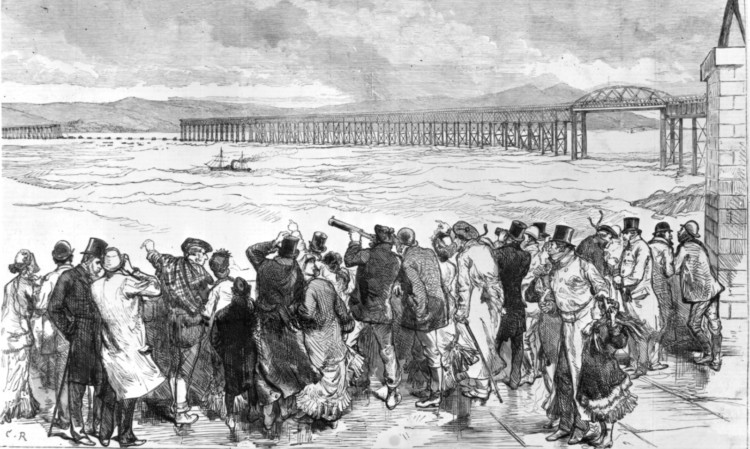A Fife man who is researching why early reports of the Tay Rail Bridge Disaster listed 75 dead instead of the now recognised 59 known to have died has found new evidence which “explodes the myth”.
Ian Nimmo White, secretary of the Tay Rail Bridge Disaster Memorial Trust, has discovered that on December 30 1879, two days after the disaster, an article was printed in the Courier and Argus headed The Numbers on the Train which he says included 16 “fictitious” deaths.
Years later, he said, the article became an iconic artefact of the tragedy, unintentionally giving birth to the long-standing belief that 75 people had perished in the tragedy.
He said: “It has a crucial clip which refers to the tickets which were taken from the ill-fated passengers at St Fort station 15 minutes before the tragedy.”
One entry on the list is “6 Broughty Ferry” but, explained Mr Nimmo White, that was impossible as “none of the passengers on the Burntisland to Dundee train who handed over their tickets at St Fort in Fife could have previously joined the train at Broughty Ferry”.
Another entry on the list is “5 Newport”. Again, this is impossible because Newport was not on the train’s route. An earlier entry on the list is “5 Newburgh”, so Mr Nimmo White has deduced that this is a repetition of the Newburgh entry.
“A third curious entry is about three company servants’ tickets,” he said.
“This was needless. Three off-duty employees are known to have been on the train, but they would have been included in passenger entries earlier on the list.
“The above three entries combine to make 14 cases of duplication, and therefore 14 fictitious victims of the Tay Bridge Disaster.
“A further two fictitious victims can be accounted for with the non ticket-carrying crew amounting to six on the list.
“We now know there were only four crew on duty in the disaster train driver, fireman, railguard and mailguard.
“And so, we have a total of 16 fictitious fatalities, the difference between the iconic myth of 75 and the finally proven death toll of 59 55 passengers plus four crew.”
